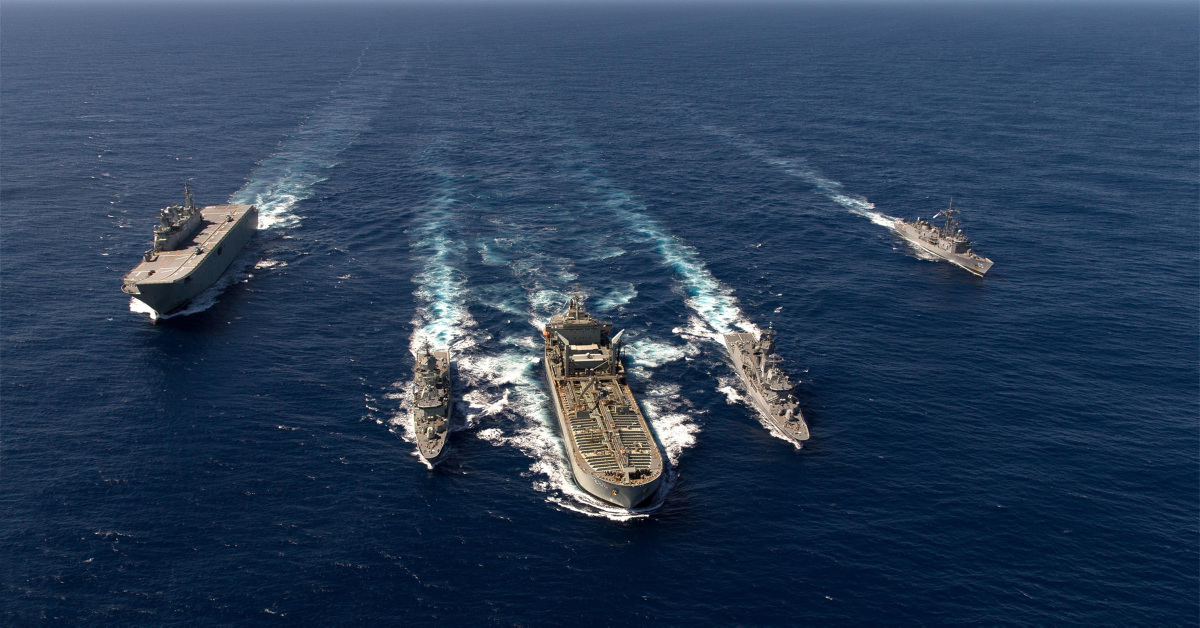Hugh White’s military revolution
Posted By Graeme Dobell on August 26, 2019 @ 06:00

Sink the navy and start again. Shrink the army. Double the air force.
That’s the military revolution of Hugh White’s How to defend Australia [1], based on his claim that Australia has spent two decades building the wrong defence force.
Times are getting tougher, White argues, and Australia must rethink its strategy. Kill comfortable assumptions. Ditch a lot. Remake the defence force to give Australia the muscle of an independent middle power. Plan for a new Oz way of war [2] as the US alliance ebbs [3] and China keeps coming.
The White argument is, indeed, relentless, surprising and confronting [4]—attacking much that is holy at Russell HQ.
The army has the most to be agitated about in the White prescription, because it gets the least. Yet the navy would be just as apoplectic; admirals love big ships and that’s not what White prescribes for their future.
A Canberra irony—not lost on those irate types at Russell—is that Hugh White’s description of the bad choices Australia has made starts with the 2000 defence white paper [5] written by a deputy secretary in the Defence Department named Hugh White.
We’ll come to the White mea culpa in a moment. First, consider his description of why Australia has spent two decades building the wrong defence force. White writes that ample defence budgets meant it became easy to commit to new capabilities without much thought about priorities:
For almost a decade after 2000, Australian defence policy drifted, and our strategic risks grew faster than anyone had expected.
The result was a series of decisions that will weaken Australia’s defence for decades to come because of the high opportunity costs they impose. They include the investment of huge sums on C-17 long-range transport aircraft, Canberra-class amphibious ships, Land 400 combat vehicles, a big fleet of major warships, and the mismanagement of the replacement of the Collins-class submarines. These poor decisions were themselves the result of a deeper failure, or refusal, to comprehend the scale and significance of the strategic shifts underway in Asia.
The sink, shrink, start again vision is a major change of course [6] that would double defence spending to 3.5% to 4% of GDP. Australia’s forces are too small for a muscular middle power, White writes, and they are designed to conduct the wrong kinds of operations:
[O]ur massive investment in amphibious land forces, and the even bigger investment in a fleet of warships designed to protect them, are completely unsuited to the strategic objectives and operational imperatives of the next few decades. Meanwhile, mismanagement means we will have far too few submarines, far too late, and quite possibly not capable enough. Our combat aircraft are ill-equipped for their most important task, and impossible to sustain in operations without massive US support. These failures mean that the more contested Asia becomes, the more we will rely on America, as America’s power and resolve ebbs swiftly away. And if America fails us, we will find we have no effective military options to meet serious threats.
What, then, of the mea culpa from the former defence deputy secretary who helped put all this in motion?
White’s view of where he went wrong in the 2000 defence white paper is that he didn’t push harder for a bigger adaption of the force structure, to move beyond the thinking that shaped the Australian Defence Force in the 1970s, ’80s and ’90s:
What I didn’t realise then—and I feel a bit guilty about this—was how quickly Chinese power would rise. How quickly America’s capacity to respond would erode, partly thanks to 9/11 and all that followed. And, therefore, how fast we should be moving, not just to expand our capacity to support the US in a conflict with China, but to expand our capacity to defend Australia independently, if that failed. I underestimated how fast things were going to change.
My only consolation is that I think most other people in Australia have underestimated that much more, and many of them are still underestimating.
For Hugh White’s confession and his views on remaking the ADF, here’s the third of his ASPI interviews.
Article printed from The Strategist: https://www.aspistrategist.org.au
URL to article: https://www.aspistrategist.org.au/hugh-whites-military-revolution/
URLs in this post:
[1] How to defend Australia: https://www.blackincbooks.com.au/books/how-defend-australia
[2] new Oz way of war: https://www.aspistrategist.org.au/a-new-australian-way-of-war/
[3] US alliance ebbs: https://www.aspistrategist.org.au/the-us-alliance-and-defending-australia/
[4] relentless, surprising and confronting: https://www.aspistrategist.org.au/how-to-defend-australia-can-the-circle-be-squared/
[5] 2000 defence white paper: http://www.defence.gov.au/publications/wpaper2000.pdf
[6] major change of course: https://www.aspistrategist.org.au/hugh-white-calls-for-australia-to-scrap-ships-and-build-more-submarines/
Click here to print.